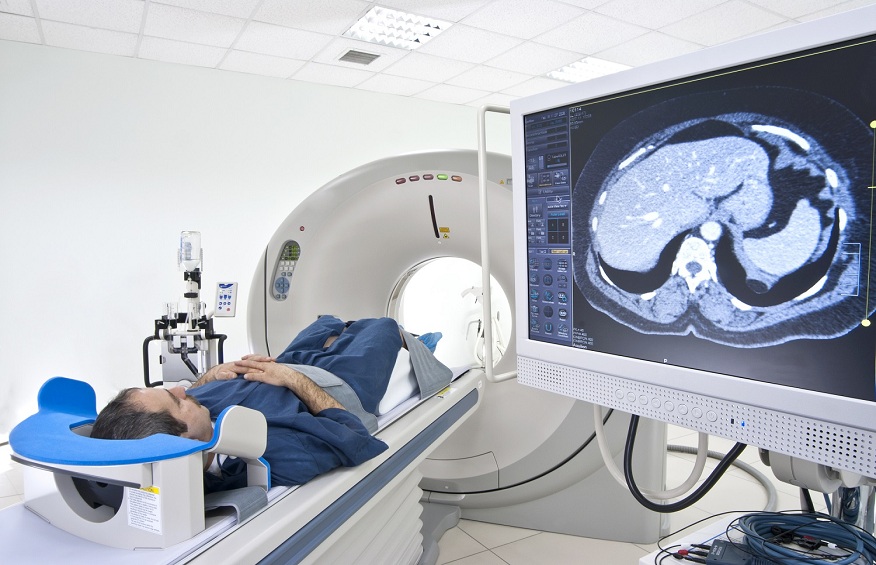Diagnostic medical imaging services, in the constantly shifting healthcare landscape, pivotally facilitate early detection and accurate diagnosis of various medical conditions; consequently–they bolster effective treatment. This potent tool revolutionizes patient care strategies for healthcare professionals: diagnostic medical imaging services in USA offer numerous advantages that profoundly influence outcomes – ultimately enhancing overall patient well-being.
Early Detection of Diseases
Early detection: a pivotal aspect in improving patient outcomes; its importance cannot be overstated. Healthcare practitioners, leveraging diagnostic imaging capabilities—can pinpoint subtle disease indicators at their incipient stages long before overt symptoms emerge. This early identification plays an especially critical role not only across prognoses but also treatments for numerous conditions–ranging from cancer’s insidious progression to cardiovascular diseases’ silent onset.
Healthcare professionals utilize X-rays, CT scans, and MRIs to delve deep into the body’s intricate architecture; in doing so – they unveil concealed anomalies. For example: CT scan high-resolution images can detect minute structural changes—providing a comprehensive understanding of the internal environment. Similarly—MRIs produce detailed cross-sectional images that afford a nuanced view; this allows for the identification of abnormalities not just in organs or soft tissues but also joints.
Early detection in the context of cancer: it yields a profound impact on the overall prognosis. Diagnostic imaging techniques–uncovering localized malignancies and potentially making them more manageable–play a pivotal role. This significantly boosts treatment efficacy; furthermore, it opens avenues for less invasive interventions—ultimately enhancing life quality for individuals confronting cancer diagnoses.
In the realm of cardiovascular diseases, timely identification of anomalies through diagnostic imaging serves as a crucial element in averting potentially life-threatening events. Visualizing the intricate network of blood vessels, identifying blockages and assessing cardiac function equips healthcare providers with proactive intervention capabilities; they can implement preventive measures or targeted treatments to mitigate heart-related conditions’ progression.
Precision in Diagnosis
Offering unparalleled precision in diagnosis, diagnostic medical imaging services utilize technologies that furnish detailed images of organs, tissues, and bones; this enables healthcare professionals to establish with a high degree of accuracy the location and nature of abnormalities. Such pinpointed precision is crucial–particularly in planning targeted interventions: it reduces the necessity for exploratory surgeries while minimizing complications’ risks.
Personalized Treatment Plans
Healthcare providers tailor treatment plans to each patient’s individual needs using the information they glean from diagnostic medical imaging. By understanding a condition’s unique characteristics at molecular and cellular levels, we develop personalized therapies that maximize treatment efficacy while minimizing adverse effects. This tailored approach signifies a notable advancement towards more effective, patient-centric healthcare.
Minimally Invasive Procedures
Diagnostic medical imaging’s advent ushers in a new era of minimally invasive procedures: for instance, surgeons can utilise technologies such as ultrasound or MRI to guide operations like laparoscopy–accessing internal structures through small incisions. This approach boasts numerous benefits; it minimises trauma to adjacent tissues, accelerates recovery times and significantly lightens the overall burden on patients. Integrating imaging into surgical procedures enhances precision: it allows for more targeted interventions and reduces invasiveness.
Real-time Monitoring of Treatment Progress
This continuous monitoring endeavour hinges on serial imaging, a systematic and iterative process. Across diverse medical scenarios–each presenting its unique challenges and requirements–we apply this method. Consider oncology for example serial imaging offers insight into tumor response to chemotherapy or other therapeutic interventions. Sequential imaging sessions: through their unravelling of the intricate narrative regarding how malignant entities react to treatment, they guide healthcare providers in making informed decisions about action courses.
Within the orthopaedic domain, diagnostic medical imaging captures a narrative of fracture healing. Through serial imaging sessions, practitioners witness and interpret the evolving dynamics of bone regeneration to determine its progression towards alignment and overall recovery. This nuanced comprehension significantly influences decisions on optimal immobilization duration, necessity for surgical intervention or suitability for physical therapy; thus customizing treatment plans based on individual patient needs.
Diagnostic medical imaging’s inherent real-time monitoring capabilities initiate a novel era of responsiveness in healthcare. Healthcare professionals, by intently observing the body’s internal landscape as treatment progresses, can promptly adapt and modify treatment plans. This flexibility becomes exceptionally vital when there is an urgent requirement to measure the efficacy of a prescribed therapy. In the realm of cancer treatment, for example: real-time monitoring permits rapid modifications to chemotherapy regimens – a process that ensures patients receive maximally effective care while simultaneously reducing the risk of adverse effects.
Advancements in Research and Development
Diagnostic medical imaging generates data that significantly contributes to research and development in the healthcare sector. Utilizing this imaging information, researchers gain insights into disease mechanisms, scrutinize the effects of new treatments, and innovate medical technologies. The ongoing cycle of research and development — fuelled by these invaluable image-derived datasets — not only fosters continual improvement in healthcare practices but also uncovers novel therapeutic approaches.
Enhanced Patient Communication and Education
We enhance patient communication by providing visual depictions of their medical conditions through diagnostic medical imaging. Physicians leverage these images to clarify diagnoses and potential treatment pathways, thereby empowering patients to make informed decisions about their healthcare. This use of visuals also significantly enriches health education; it fosters a deeper understanding of patients about their conditions – encouraging active participation in the care process – and boosts adherence to recommended treatments.
Cost-effective Healthcare
The initial costs of diagnostic medical imaging technologies carry significant importance: they ultimately yield long-term benefits for cost-effective healthcare. Frequently, these advanced tools provoke efficient treatment plans—ones that are not only more precise but also less expensive—by enabling early detection and accurate diagnoses. Moreover; minimally invasive procedures play a crucial role in reducing exploratory surgeries and hospital stays – a direct translation to lower overall healthcare costs.
Conclusion
Undeniably, diagnostic medical imaging solutions have revolutionized the healthcare landscape; they present a myriad of benefits: from early disease detection to tailored treatment plans. Moreover, their precision and minimally invasive procedures play an indispensable role in enhancing patient outcomes –a significant contribution not only for real-time monitoring but also towards research across diverse healthcare delivery aspects. As technology relentlessly progresses into the future, it positions diagnostic medical imaging not just as an indispensable tool—but rather a critical asset—in our persistent pursuit of optimal healthcare delivery: promising even greater advancements ahead.





